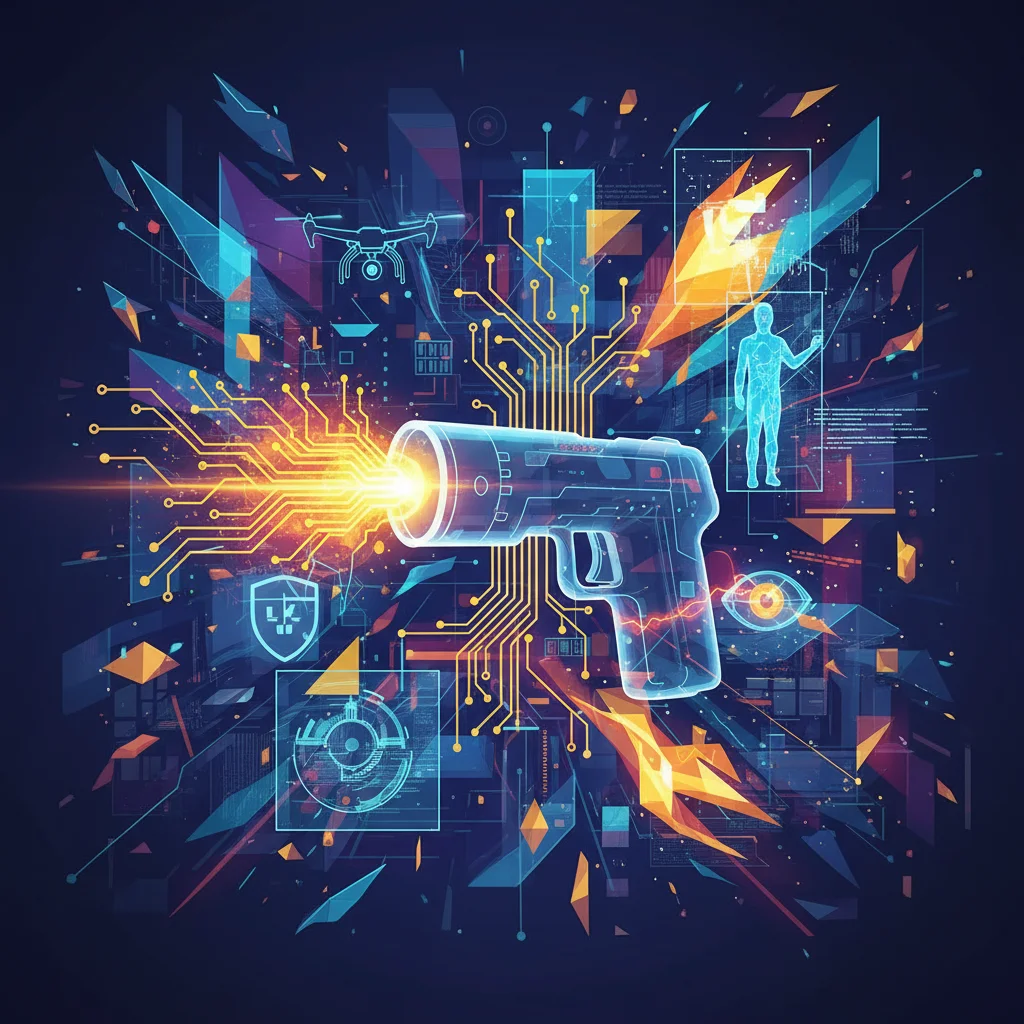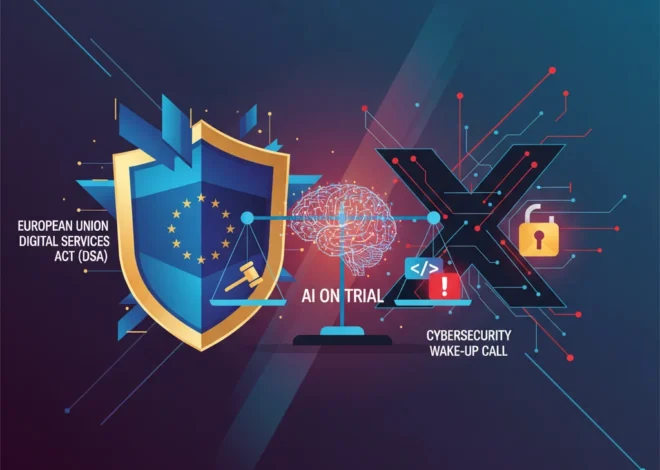
Beyond the Zap: How Taser’s Maker is Building a Controversial AI-Powered Future for Policing
When you hear the word “Taser,” a singular, distinct image probably comes to mind: the crackle of electricity, the bright yellow device, the immediate incapacitation. For decades, the Taser has been an iconic, and often controversial, piece of hardware. But to think of its creator, Axon, as just a hardware company is like thinking of Apple as just a phone maker. It misses the entire ecosystem—and the revolution—they’re building.
In a recent discussion on BBC’s Tech Life, the vision for the future of this technology was laid bare, and it has far less to do with volts and wires and far more to do with data, the cloud, and artificial intelligence. The physical Taser is no longer the final product; it’s becoming a single, connected node in a vast, intelligent network designed to be the central nervous system of modern law enforcement. This is a story of a dramatic pivot from manufacturing to a sophisticated SaaS model, and it carries profound implications for everyone—from developers and entrepreneurs to the general public.
From Stun Gun to Software Titan: The Great Pivot
The journey of Axon is a masterclass for startups on how to evolve a product into a platform. Originally Taser International, the company built its empire on its signature Conducted Energy Weapon (CEW). But around a decade ago, they saw the writing on the wall: the future wasn’t in selling individual gadgets but in creating an indispensable, recurring-revenue ecosystem. This insight led to two key innovations:
- The Axon Body Camera: A rugged, wearable camera that captures a police officer’s perspective.
- Evidence.com: A cloud-based digital evidence management system to store, manage, and share the tsunami of data these cameras would create.
Suddenly, the business model shifted. Instead of a one-time hardware sale, Axon began selling multi-year subscriptions to their software platform. Police departments weren’t just buying cameras; they were buying a solution for data storage, chain-of-custody management, and prosecutorial support. This move locked customers into the Axon ecosystem, creating a powerful data moat and a predictable revenue stream—the holy grail of any modern tech company. According to their own reports, Axon’s cloud and services revenue has seen explosive growth, often exceeding 30% year-over-year (source), proving the success of this strategic pivot.
This ecosystem is now expanding to include in-car cameras (Axon Fleet), drone technology, and records management systems that aim to automate the tedious paperwork that buries most officers. The Taser itself, like the new Taser 10 model, is now a “smart” device, logging its usage data directly into this same cloud network, creating a holistic record of an incident from multiple perspectives.
Cracking the Code: How India is Building an AI to Unite a Nation of 22 Languages
The Engine Room: AI, Machine Learning, and Automation
Storing petabytes of video data is one thing; making sense of it is another. This is where artificial intelligence and machine learning enter the picture, transforming Axon from a data storage company into an intelligence company. The application of AI is focused on a core problem in law enforcement: time. Officers spend a staggering amount of their shifts on administrative tasks rather than community policing.
Here’s how AI is being deployed to tackle this:
- Automated Redaction: Manually blurring the faces of bystanders, victims, or minors in body camera footage for privacy reasons can take hours for a single video. AI algorithms can now do this in minutes, automatically identifying and redacting faces, license plates, and other sensitive information.
- Speech-to-Text Transcription: AI-powered services can automatically transcribe everything said in a video, creating a searchable text log of encounters. This is invaluable for report writing and court evidence.
- Evidence Tagging: In the future, machine learning models could be trained to identify key moments in a video—such as when a weapon is drawn, a chase begins, or a use-of-force incident occurs—and automatically tag them for review.
This push towards automation promises a massive return on investment for police departments, freeing up officer time and streamlining workflows. Let’s look at a practical comparison of how these tasks are handled.
The table below illustrates the potential efficiency gains from integrating AI into the evidence review process for a hypothetical 30-minute body camera video.
| Task | Manual Process (Estimated Time) | AI-Assisted Process (Estimated Time) | Efficiency Gain |
|---|---|---|---|
| Video Redaction (10 faces) | 60 – 90 minutes | 5 – 10 minutes | ~90% |
| Full Transcription | 120 – 180 minutes | 3 – 5 minutes | ~98% |
| Report Writing & Summary | 45 minutes | 15 minutes (review & edit AI draft) | ~67% |
The numbers are compelling. For developers and those in the programming field, the challenge lies in building these AI models responsibly, ensuring they are accurate, fair, and transparent. The underlying code has real-world consequences.
The AI Revolution Is Coming for Your Lawyer: Meet the 6 Companies Leading the Charge
The Cybersecurity Fortress and the Future Roadmap
With great data comes great responsibility. Axon’s entire ecosystem hinges on the trust that its cloud platform is secure. A data breach of Evidence.com would be catastrophic, exposing sensitive footage, compromising investigations, and eroding public trust. This makes cybersecurity a paramount concern. Axon invests heavily in end-to-end encryption, access controls, and regular audits to protect its digital fortress. A report by the Police Executive Research Forum highlighted that securing digital evidence against tampering and unauthorized access is one of the top challenges for law enforcement agencies today (source), underscoring the critical nature of this work.
So, what’s next? The logical progression is toward real-time, proactive capabilities. Axon has already explored (and, after public outcry, paused) the development of armed drones equipped with Tasers, a concept that raises a hornet’s nest of ethical questions. While that specific project is on hold, the underlying ambition remains: to create a system that can analyze live feeds from body cameras, drones, and city-wide sensors to provide officers with real-time situational awareness.
Imagine an AI system that alerts a commander that an officer’s heart rate is dangerously high, that a gunshot has been detected in a specific area, or that a car associated with a crime has been spotted by a camera miles away. This is the promise of a fully integrated “public safety operating system.” It represents the pinnacle of technological integration but also the deepest point of societal concern about privacy and automated decision-making.
Beyond the Code: What Tech Startups Can Learn from Indie Video Games
Conclusion: A New Operating System for Society?
The story of the Taser is no longer about a single device. It’s about the construction of a powerful, centralized platform fueled by data and supercharged by artificial intelligence. Axon’s CEO is not just selling hardware; he’s selling a vision of a safer, more efficient future for public safety. This vision offers tantalizing solutions to age-old problems of bureaucracy and human error in policing.
However, it also forces us to confront uncomfortable questions. As we weave this technology into the fabric of our justice system, we must ask who holds the keys? What biases are we coding into the algorithms? And where is the line between a tool for accountability and an instrument of surveillance? The future of the Taser isn’t just in the hands of the engineers and entrepreneurs building it; it’s in the hands of a society that must decide how it will be used.


